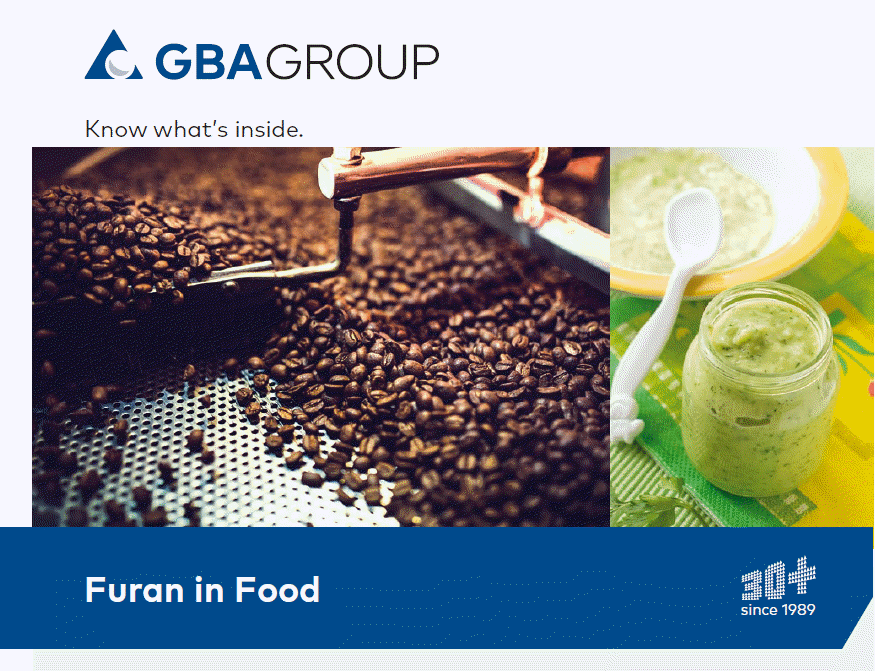
Furan is a colorless, odorless, and highly volatile fluid with a boiling point of 31 °C and is not water-soluble. Although it occurs naturally in oils from conifers containing resin, in the chemical industry it is known as an intermediate product of various organic syntheses. However, it can also be produced by artificial means and utilized in the production of other chemicals.
Furan is also very important for the food industry, because, like acrylamide, it can occur during food processing if the food product is heated strongly during its production or preparation. The exact circumstances and mechanisms of furan generation have not been fully elucidated. Depending on the composition of the food product, several different mechanisms can be taken into consideration. However, there is a heating process such as cooking or roasting at the root of all the significant potential causes. The results of various tests indicate that the splitting of amino acids and sugar during the heating process is highly relevant for the formation of furan. Additionally, furan can be formed from many other ingredients, such as vitamin C, carbohydrates, amino acids, unsaturated fatty acids, and carotenoids.
Furan can be contained in a wide variety of food products, ranging from coffee (especially espresso), cocoa, dried fruits, and nuts to a diverse range of cereal products. Particularly high amounts have been detected in food products which were roasted or heated in closed containers during their production, e.g. canned goods and instant meals. In the case of instant meals, generally baby food products consisting of noodles, meat, and vegetables display elevated levels of furan.
The GBA Group is capable of testing furan in food products, including coffee, by means of gas chromatography coupled with mass spectrometry. Furthermore, we can provide you with comprehensive consulting on this topic.
Furan is also very important for the food industry, because, like acrylamide, it can occur during food processing if the food product is heated strongly during its production or preparation. The exact circumstances and mechanisms of furan generation have not been fully elucidated. Depending on the composition of the food product, several different mechanisms can be taken into consideration. However, there is a heating process such as cooking or roasting at the root of all the significant potential causes. The results of various tests indicate that the splitting of amino acids and sugar during the heating process is highly relevant for the formation of furan. Additionally, furan can be formed from many other ingredients, such as vitamin C, carbohydrates, amino acids, unsaturated fatty acids, and carotenoids.
Furan can be contained in a wide variety of food products, ranging from coffee (especially espresso), cocoa, dried fruits, and nuts to a diverse range of cereal products. Particularly high amounts have been detected in food products which were roasted or heated in closed containers during their production, e.g. canned goods and instant meals. In the case of instant meals, generally baby food products consisting of noodles, meat, and vegetables display elevated levels of furan.
The GBA Group is capable of testing furan in food products, including coffee, by means of gas chromatography coupled with mass spectrometry. Furthermore, we can provide you with comprehensive consulting on this topic.

Goldtschmidtstr. 5
21073 Hamburg
Germany
21073 Hamburg
Germany
Boulevard | 031
